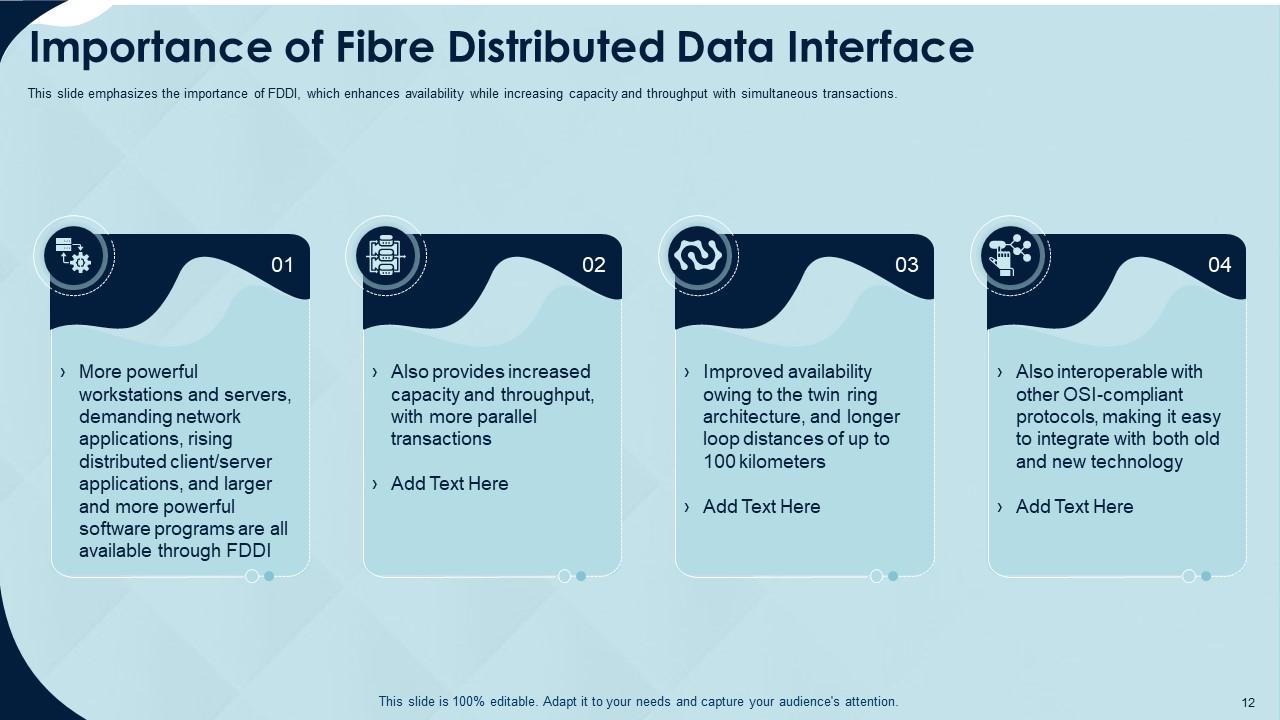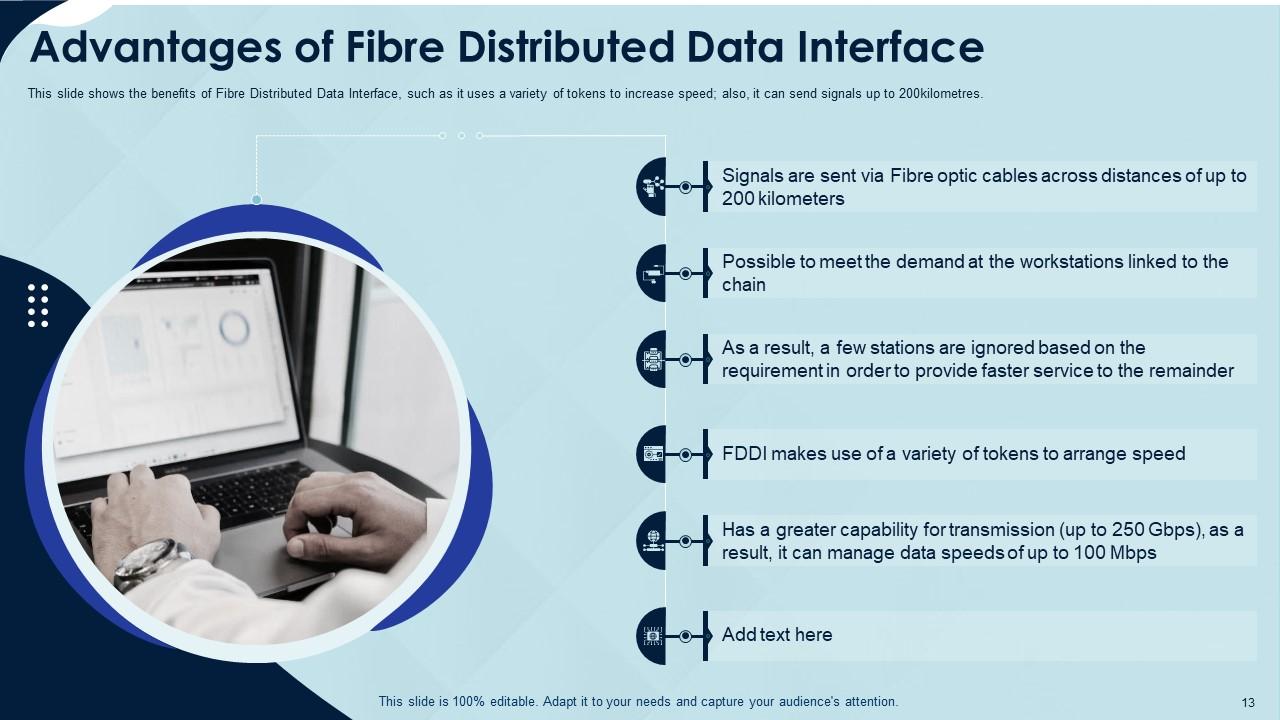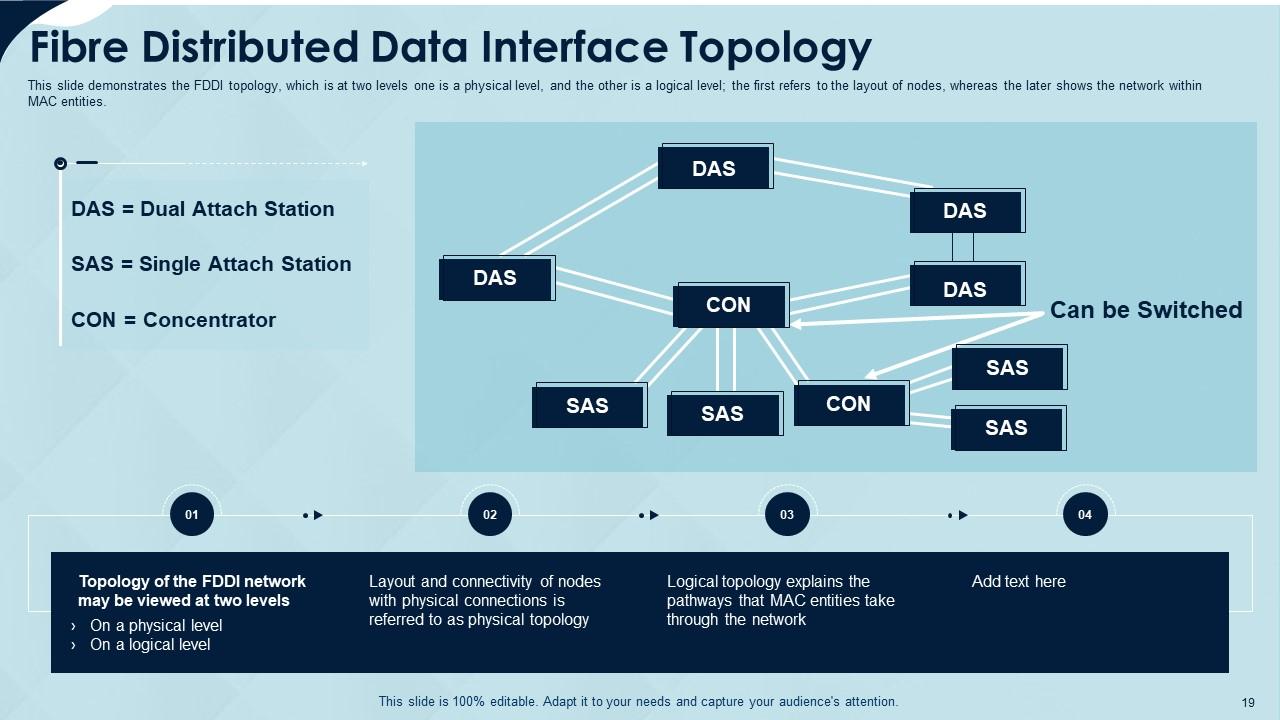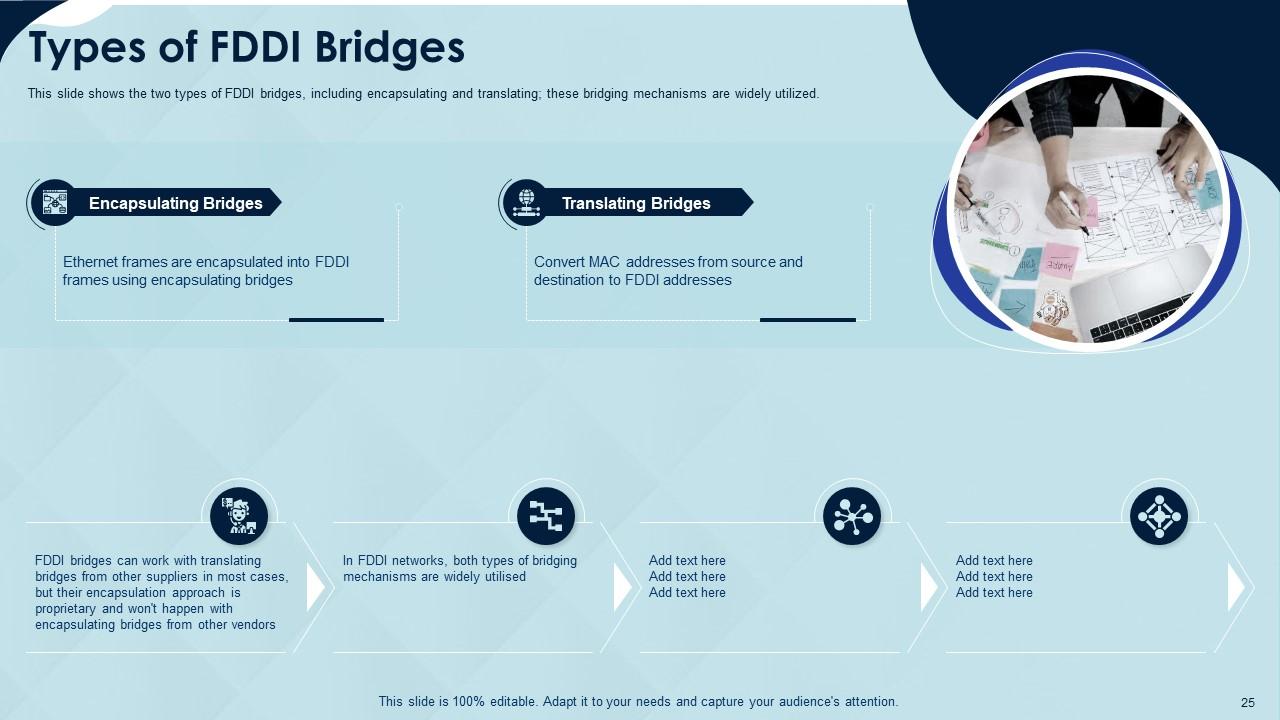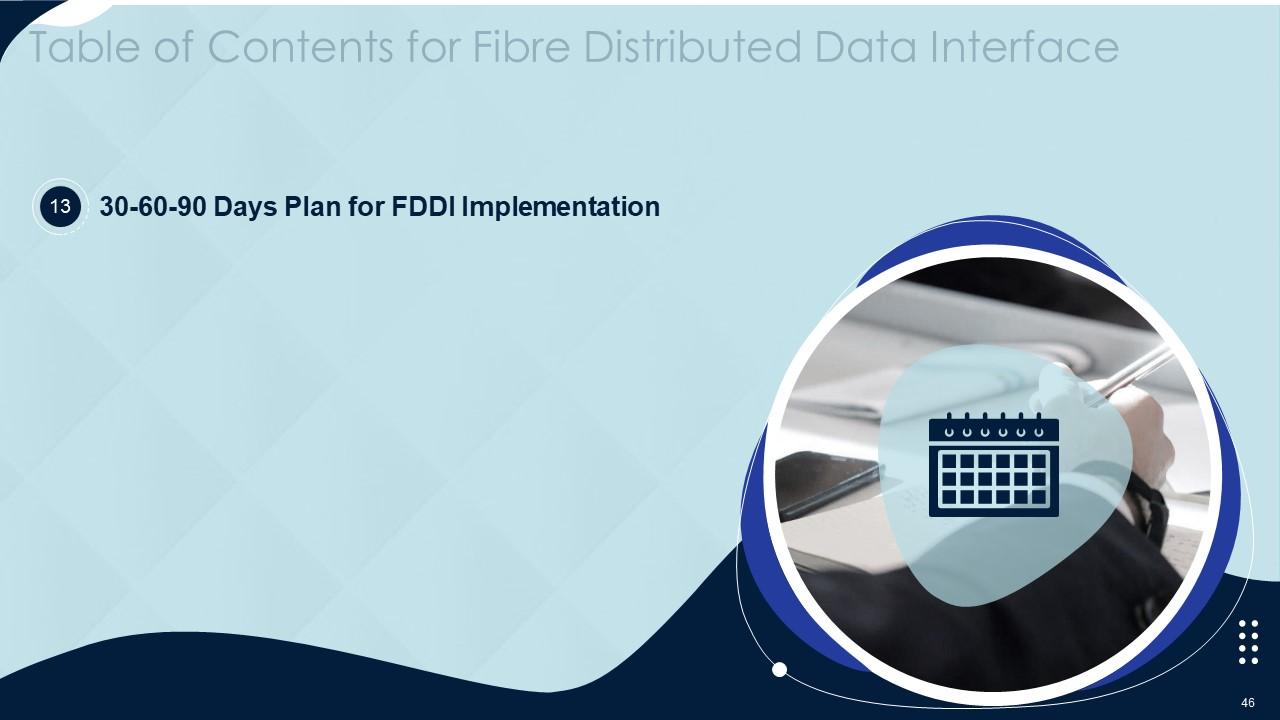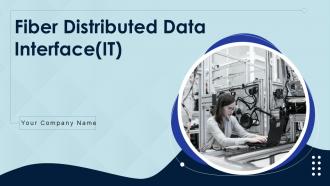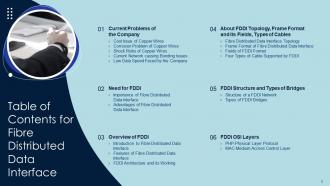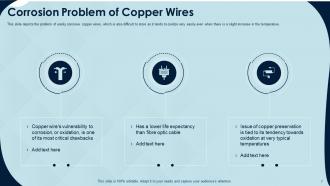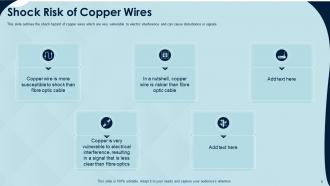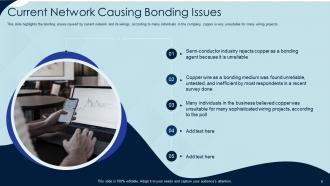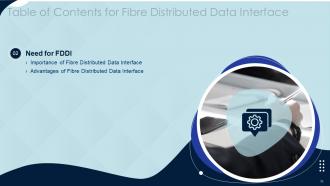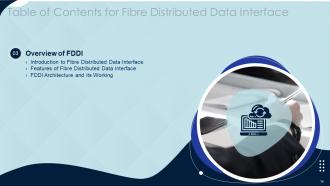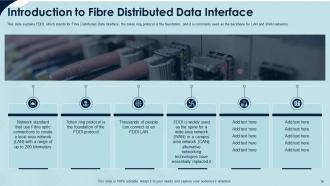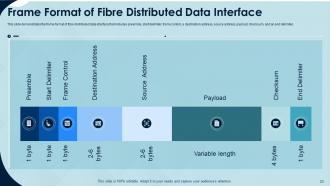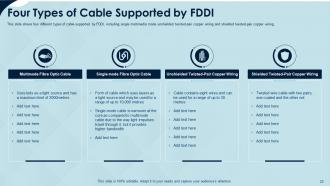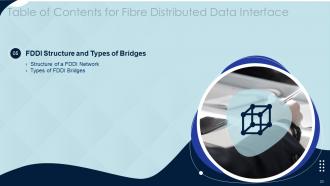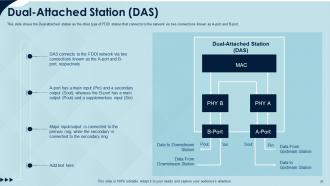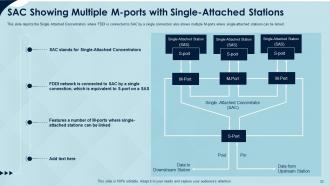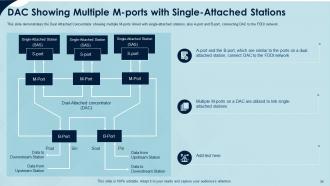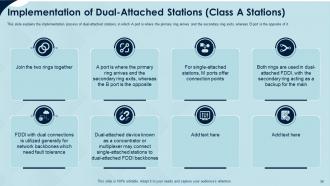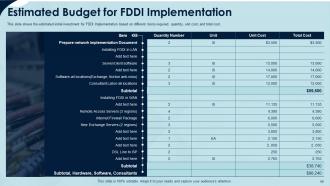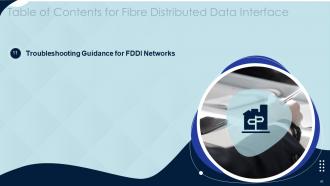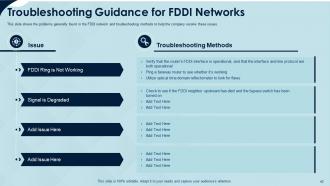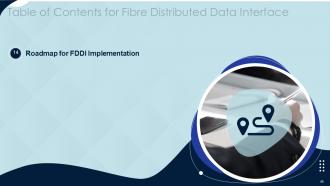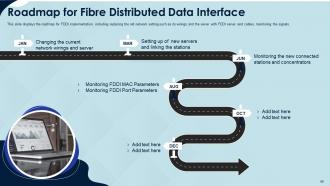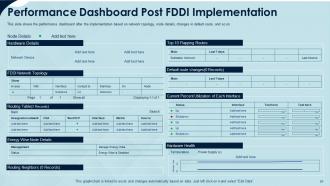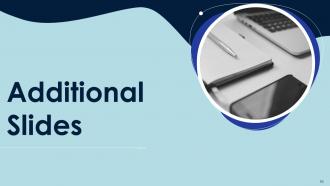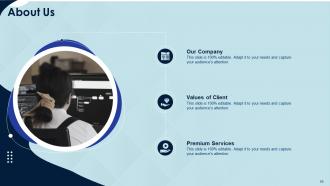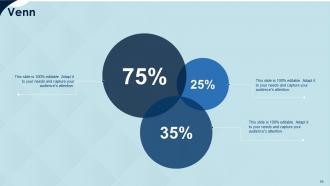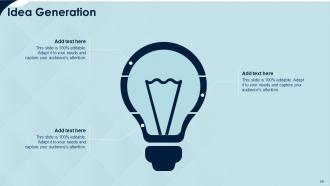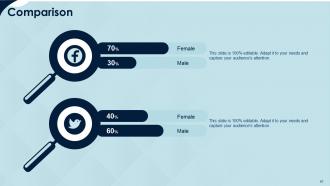Fiber distributed data interface it powerpoint presentation slides
Interoperability is the capacity of software components to interact, exchange data, interoperate, and utilize data information across other software components or systems tested during interoperability testing in the software industry. In this Interoperability Testing PowerPoint presentation, we have covered the need, objectives, and importance of Interoperability testing and its advantages to the business. In addition, this PPT gives a brief introduction to the Interoperability testing process, showing the architecture and its working. Moreover, this Interoperation Testing presentation represents various Interoperability Testing types and a detailed Interoperability Testing process. This PowerPoint presentation outlines the challenges faced during the process and mitigation methods to overcome, gives an overview of Interoperation Testing in mobiles, and compares it with Conformance Testing. Lastly, the Delivery Network deck comprises a 30-60-90-day plan to implement Interoperation Testing, a roadmap, and a dashboard and impact of the Interoperability Testing implementation in the organization. Download our 100 Percent editable and customizable template, which is also compatible with Google Slides.
- Google Slides is a new FREE Presentation software from Google.
- All our content is 100% compatible with Google Slides.
- Just download our designs, and upload them to Google Slides and they will work automatically.
- Amaze your audience with SlideTeam and Google Slides.
-
Want Changes to This PPT Slide? Check out our Presentation Design Services
- WideScreen Aspect ratio is becoming a very popular format. When you download this product, the downloaded ZIP will contain this product in both standard and widescreen format.
-

- Some older products that we have may only be in standard format, but they can easily be converted to widescreen.
- To do this, please open the SlideTeam product in Powerpoint, and go to
- Design ( On the top bar) -> Page Setup -> and select "On-screen Show (16:9)” in the drop down for "Slides Sized for".
- The slide or theme will change to widescreen, and all graphics will adjust automatically. You can similarly convert our content to any other desired screen aspect ratio.
Compatible With Google Slides

Get This In WideScreen
You must be logged in to download this presentation.
PowerPoint presentation slides
Enthrall your audience with this Fiber Distributed Data Interface IT Powerpoint Presentation Slides. Increase your presentation threshold by deploying this well crafted template. It acts as a great communication tool due to its well researched content. It also contains stylized icons, graphics, visuals etc, which make it an immediate attention grabber. Comprising sixty two slides, this complete deck is all you need to get noticed. All the slides and their content can be altered to suit your unique business setting. Not only that, other components and graphics can also be modified to add personal touches to this prefabricated set.
People who downloaded this PowerPoint presentation also viewed the following :
Content of this Powerpoint Presentation
Slide 1: This slide introduces Fiber Distributed Data Interface(IT). State Your Company Name and begin.
Slide 2: This slide shows Agenda for Fibre Distributed Data Interface.
Slide 3: This slide presents Table of Contents for Fibre Distributed Data Interface.
Slide 4: This is another slide continuing Table of Contents for Fibre Distributed Data Interface.
Slide 5: This slide highlights title for topics that are to be covered next in the template.
Slide 6: This slide depicts the cost issue of copper wires which highlights that copper cables are more expensive than any other cables in the market.
Slide 7: This slide displays the problem of easily corrosive copper wires, which is also difficult to store as it tends to oxidize very easily.
Slide 8: This slide outlines the shock hazard of copper wires which are very vulnerable to electric interference and can cause disturbance in signals.
Slide 9: This slide represents Current Network Causing Bonding Issues.
Slide 10: This slide shows the issue of low data transmission in the current network.
Slide 11: This slide highlights title for topics that are to be covered next in the template.
Slide 12: This slide showcases Importance of Fibre Distributed Data Interface.
Slide 13: This slide shows the benefits of Fibre Distributed Data Interface, such as it uses a variety of tokens to increase speed.
Slide 14: This slide highlights title for topics that are to be covered next in the template.
Slide 15: This slide presents Introduction to Fibre Distributed Data Interface.
Slide 16: This slide displays Features of Fibre Distributed Data Interface.
Slide 17: This slide demonstrates the architecture and the working of FDDI.
Slide 18: This slide highlights title for topics that are to be covered next in the template.
Slide 19: This slide demonstrates the FDDI topology, which is at two levels one is a physical level, and the other is a logical level.
Slide 20: This slide represents Frame Format of Fibre Distributed Data Interface.
Slide 21: This slide provides detailed information of different fields of FDDI frame format.
Slide 22: This slide shows four different types of cable-supported by FDDI.
Slide 23: This slide highlights title for topics that are to be covered next in the template.
Slide 24: This slide explains the structure of the FDDI network in which the network doesn’t look like a circle.
Slide 25: This slide shows the two types of FDDI bridges, including encapsulating and translating.
Slide 26: This slide highlights title for topics that are to be covered next in the template.
Slide 27: This slide describes the physical layer protocol as coding and decoding of data.
Slide 28: This slide explains the medium layer as the responsible layer for identifying addresses.
Slide 29: This slide highlights title for topics that are to be covered next in the template.
Slide 30: This slide depicts the single-attached station as one of the FDDI station types.
Slide 31: This slide showcases the Dual-attached station as the other type of FDDI station that connects to the network.
Slide 32: This slide highlights title for topics that are to be covered next in the template.
Slide 33: This slide shows SAC Showing Multiple M-ports with Single-Attached Stations.
Slide 34: This slide presents DAC Showing Multiple M-ports with Single-Attached Stations.
Slide 35: This slide highlights title for topics that are to be covered next in the template.
Slide 36: This slide explains target token rotation time, which is an essential parameter of FDDI.
Slide 37: This slide highlights title for topics that are to be covered next in the template.
Slide 38: This slide displays Implementation of Single-Attached Stations (Class B Stations).
Slide 39: This slide explains the implementation process of dual-attached stations, in which A port is where the primary ring arrives.
Slide 40: This slide shows the estimated initial investment for FDDI Implementation.
Slide 41: This slide highlights title for topics that are to be covered next in the template.
Slide 42: This slide shows the problems generally found in the FDDI network and troubleshooting methods to help the company resolve these issues.
Slide 43: This slide highlights title for topics that are to be covered next in the template.
Slide 44: This slide depicts that although the initial costs of fibre cables are high, it costs very less in the long run.
Slide 45: This slide depicts that the speed of data transmission can be increased up to 100Mbps after implementing the FDDI network.
Slide 46: This slide highlights title for topics that are to be covered next in the template.
Slide 47: This slide shows 30-60-90 Days Plan for Fibre Distributed Data Interface.
Slide 48: This slide highlights title for topics that are to be covered next in the template.
Slide 49: This slide presents Roadmap for Fibre Distributed Data Interface.
Slide 50: This slide highlights title for topics that are to be covered next in the template.
Slide 51: This slide shows the performance dashboard after the implementation based on network topology.
Slide 52: This slide displays Icons for Fibre Distributed Data Interface (IT).
Slide 53: This slide is titled as Additional Slides for moving forward.
Slide 54: This is About Us slide to show company specifications etc.
Slide 55: This slide depicts Venn diagram with text boxes.
Slide 56: This is a Timeline slide. Show data related to time intervals here.
Slide 57: This is a Financial slide. Show your finance related stuff here.
Slide 58: This slide contains Puzzle with related icons and text.
Slide 59: This is an Idea Generation slide to state a new idea or highlight information, specifications etc.
Slide 60: This slide shows Post It Notes. Post your important notes here.
Slide 61: This is a Comparison slide to state comparison between commodities, entities etc.
Slide 62: This is a Thank You slide with address, contact numbers and email address.
Fiber distributed data interface it powerpoint presentation slides with all 67 slides:
Use our Fiber Distributed Data Interface IT Powerpoint Presentation Slides to effectively help you save your valuable time. They are readymade to fit into any presentation structure.
FAQs
Copper wires are not ideal for data transmission because they are easily corroded, expensive, and vulnerable to electric interference, which can cause signal disturbances. Copper wires tend to oxidize very easily, making them difficult to store.
Fibre Distributed Data Interface (FDDI) is a high-speed networking technology that uses fibre optic cables for data transmission. The benefits of FDDI include increased speed, reduced signal interference, and improved reliability.
Fibre Distributed Data Interface (FDDI) uses a dual-ring topology with a physical ring and a logical ring. Data travels around the physical ring in one direction and around the logical ring in the opposite direction. This topology ensures that data can be transmitted even if one ring is broken.
Fibre Distributed Data Interface (FDDI) networks are structured using single-attached stations (SAS) and dual-attached stations (DAS). SAS stations have one connection to the network, while DAS stations have two connections.
Common problems found in Fibre Distributed Data Interface (FDDI) networks include cable damage, equipment failure, and software errors. These issues can be resolved through troubleshooting methods such as checking cable connections, replacing damaged cables, and resetting equipment
-
Informative design.
-
Very unique and reliable designs.













